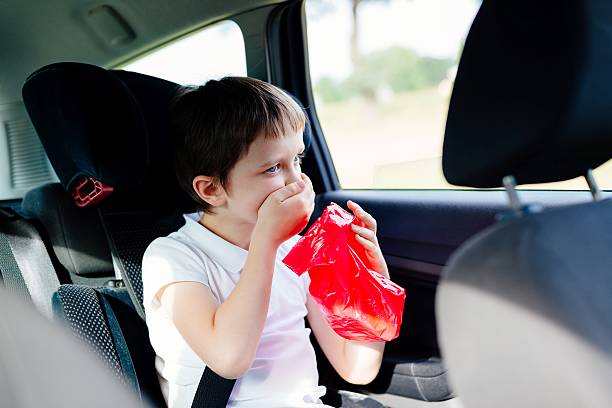Are you in a dilemma and wondering why your child is vomiting? Vomiting is the body’s dynamic way of expelling foreign substances from the stomach. Possibly your child might have ingested something not so friendly to their stomach.
Gastroenteritis, also known as stomach flu, is one of the most common causes of vomiting in children. Vomiting may also be due to ear and throat infections or serious diseases like pneumonia or meningitis.
While treatment of this condition doesn’t require hospitalization due to the provision of supportive care, you should treat your child’s condition as a medical emergency and consult a doctor if symptoms persist after 24 hours.
Causes of Vomiting
Gastritis
The stomach is made up of mucus membranes, balancing the stomach acid and the wall lining.
Disruption in the natural balance of the mucus lining can result in vomiting, heartburn, and loss of appetite. A common cause of gastritis is rotavirus.
Food Allergy
Food allergies can also cause vomiting and often occurs a few minutes after eating the food. Examples of foods that cause allergies include peanuts, eggs, milk, tree nuts, etc.
Dyspepsia
Dyspepsia is a condition that occurs due to indigestion of food substances. This condition can make you feel satiated with minimal food intake and result in food expulsion from the stomach.
Coughing
Coughing can also cause your child to vomit and is common in children with high reflux.
Accidental poisoning
Your child can throw up from accidental poisoning from household chemicals or medication. You should seek urgent medical care if your child has ingested something toxic.
Generally, symptoms of vomiting stop within a few hours. If your child’s symptoms persist after 24 hours, other severe conditions such as pyloric stenosis may be responsible. Schedule an appointment with a doctor for a professional consult.
Symptoms
Vomiting isn’t always a cause for concern, even though a child’s first sign of feeling unwell can be vomiting. Other symptoms that may cause problems to include:
- Abdominal pain
- Bloody stools
- Vomiting for more than one day
- High fever.
- Lethargic behavior
- Increased irritability
Dehydration may occur if vomiting is persistent. Drinking fluids like water or juice is an effective way to stay hydrated.
Diagnosis
The first step to an informed diagnosis process is that your doctor will examine your child’s medical record for other conditions that may cause vomiting.
Your doctor will ask questions about the frequency and pattern of vomit and relative accompanying symptoms such as diarrhea.
Your doctor may check for symptoms of stress, weight loss, and other metabolic disorders during a physical examination.
Your doctor will suggest an appropriate treatment option based on the test result.
Treatment
Since vomiting is an exhausting and unpleasant experience for children, it needs to be treated with tenderness. Ensure your child drinks enough fluids and monitors their hydration status to prevent dehydration.
Rehydration supplements or a cup of juice can aid rehydration since sweetened liquids are less difficult to absorb than water.
Other home remedies to treat this condition include:
- Medication such as paracetamol to ease pain and discomfort
- Start with soft food like soup and gradually return to a regular diet once symptoms subside.
When to See a Doctor
While vomiting can be a mild condition and resolves within a few hours, you should be worried and seek a professional consult if:
- Your child complains of abdominal pain and cant retain food
- Vomits blood
- Your child appears critically ill, and symptoms don’t improve after 24 hours
Prevention
The primary cause of vomiting is stomach flu. Stomach flu is highly contagious and caused by rotavirus and irritates the intestine lining. The following routine measures can help prevent the spread of diseases:
- Before touching a sick child, wash and sanitize your hands.
- Ensure your child practices healthy hygiene by washing his hands before and after a meal
- Constantly educate your child on the danger of feeling his mouth, nose, and eye after engaging in rigorous activities.
- Wash your hands before handling food items
- Avoid sharing utensils.
- Use a disinfectant spray to clean flat surfaces and the floor.
Nobody likes the feeling of a tight stomach; as such, you should always eat healthily and stay away from all known triggers. Observe your child’s symptoms and contact your doctor if symptoms don’t improve within 24 hours.

